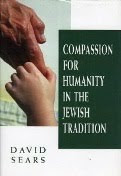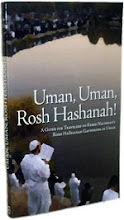
Rabbi Shimshon Barsky of Bnei Brak, depicted in the photo above, is a son of Rabbi Noson Barsky and grandson of Rabbi Shimshon Barsky of Uman. He remembered a number of Pesach customs and hanhagos of his father and grandfather.
Rabbi Shimshon Barsky of Uman, some of whose teaching were published as “Likutey Eitzos—Ivri Teitch,” was a descendant of Rebbe Nachman through his daughter Sarah, and was a leading figure in the Breslov community before the Stalinist persecutions. His son Reb Noson spent the first twenty years of his life with his parents in Uman, until in 1914 on the eve of World War I, he married the daughter of Rabbi Henich Gutterman, a Gerer Chassid from Lublin, Poland, who had become a Breslover. From then on, Reb Noson lived in Lublin, while his father remained in Uman until his passing in 1935. Reb Noson and his wife and seven children miraculously escaped to Eretz Yisrael two weeks before the outbreak of World War II, when Shimshon was four years old. Reb Noson Barsky’s customs mentioned below were also those of his father.
Reb Shimshon remembered that his father Reb Noson Barsky allowed the smaller children to eat gebrokhts. However, when the children were older, he no longer permitted gebrokhts in his home.
*
Reb Noson Barsky put out ten pieces of bread, but did not perform a lengthy bedikas chometz.
*
He wore a spodek and kittel at the Seder.
*
His wife and any other women present lit the candles when the men came home from shul. They were yotzei “Shehechiyanu” after Kiddush.
*
He did not bentch the children before the Seder.
*
Only the men and boys said Kiddush. The women just listened, as on a regular Shabbos or Yom Tov. Reb Noson Barsky and his sons recited Kiddush together, and the boys also said the words out loud.
*
The bekhers they used contained a smaller shi’ur (presumably around 4 oz.), as was common in those parts of Eastern Europe in past generations.
*
The men leaned on a pillow next to the arm of the chair for the mitzvos, but not during the se’udah. (According to Ashkenazic custom, the women did not recline.)
*
“Kadesh, Urchatz,” etc., were recited at the beginning of the Seder, and then at each component of the Seder, the name of the new section was announced with the niggun of the Haggadah.
*
After “Yachatz,” Reb Noson Barsky wrapped the Afikoman and put it aside. The children “stole” the Afikoman, and Reb Noson bartered to get it back, according to the common minhag.
*
Only the children said “Mah nishtanah,” and the adults did not repeat it.
*
After the Four Questions, Reb Noson said, “Der teretz is…” and recited “ Avodim hoyinu.”
*
He used chrein for both morror and korekh. Lettuce was not available in either Poland or the Ukraine at Pesach time.
*
For karpas, he used potato. This seems to have been the common minhag.
*
He reclined for karpas.
*
The egg for the ka’arah was boiled and then roasted on the fire.
*
Charoses consisted of grated apples, chopped walnuts, cinnamon, and wine.
*
The wine was added to the charoses when it was prepared, not when the mixture was place on the table. A small amount of charoses was placed on the ka’arah, and the rest remained on the table in a bowl for serving.
*
Reb Noson Barsky placed a plate containing the six simanim on top of the three covered matzos.
*
He did not use the egg from the ka’arah at the beginning of the meal, but distributed eggs from a separate bowl.
*
He dipped the chrein into the charoses and left a little charoses on the chrein (not a lot) both by morror and korekh. He was not makpid about preventing the the matzah from coming in contact with the charoses for korekh.
*
On the ka’arah, he used grated chrein for morror (i.e., the lowest point of the upper segol), and a piece of the head of the horseradish root for chazeres (i.e., the lowest point of the lower segol).
*
For zero’a, he used a roasted chicken wing.
*
He used the Ohr Zarei’ach Haggadah compiled by Rabbi Alter Tepliker.
*
He recited the Haggadah with intense hisorerus, and chanted the entire Haggadah the same niggun except for “Vehi she’omdoh,” which he sang to the familiar upbeat melody that is still sung by many Chassidim.
*
He simply recited the Haggadah and explained a few highlights briefly to his family in Yiddish.
*
He sent the children to open the door for “Shfokh chamoskha,” and no one said “Borukh ha-boh.” The kos shel Eliyohu was placed on the table and filled after bentching, prior to “Shfokh chamoskha.”
*
After concluding the Seder, he recited Shir HaShirim with great deveykus.














No comments:
Post a Comment